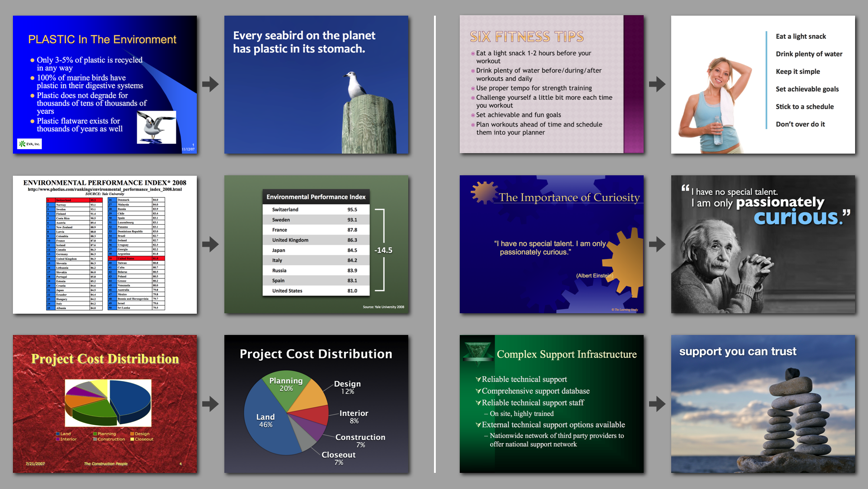“There are always three speeches, for every one you actually gave. The one you practiced, the one you gave, and the one you wish you gave.” Dale Carnegie
Presentations are a critical communication medium which entrepreneurs need to be adept at. Good presentation techniques make it easier to get your point across to your team, investors and customers. However, to be able to present like Steve Jobs, requires a lot of hard work, creativity and passion. Whenever I have seen a great presentation, it has the same five components. These components make the presentation experience engaging, stimulating and interesting. When any one of these key components is missing, the presentation unravels itself. These five components are:
1. Theme: We have all been to presentations where confusion surrounds the first 15 minutes, and everyone is trying to understand what the presenter is attempting to establish. With the aid of a theme the presenter is able to communicate the core essence of what is being presented. A theme serves as an anchor to keep the audience focused on the single most important message in your presentation. To read more about how to develop a theme for your presentation please click here.
2. Navigation: The outline is supposed to break the story into manageable parts, so that the audience does not get lost. Research has shown that focusing on a maximum of 3 main points in your presentation, is an optimal number as far as recall and attention spans are concerned. It is important that when we begin talking about a key point we introduce it, talk about it, and have a conclusion for it before we move on to the next point. To read more about developing a good outline for your presentation please click here.
3. Call to Action: This component requires the presenter to clearly state the action the audience needs to take after the presentation. This could be many things, ranging from closing a deal, securing funding, or convincing the team to go with a particular marketing strategy. Without this component we have wasted the audience’s time and they will leave the presentation frustrated and confused. Every presentation must have a specific call to action to fulfill its core purpose. To read more about developing a call to action for your presentation please click here.
4. Design: The creativity part of the presentation is one of the most challenging aspects when done correctly. It is about reducing the presentation content into simple messages, and with the help of visual aids communicated to your target audience optimally. We need to be wary of using clipart, complicated tables & charts, bullet points and distracting templates. Every element of your presentation from the colors, font and images must communicate a particular message to your audience. To read more design tips for your presentation please click here.
5. Rehearsal: Being prepared is the difference between a good and a great presentation. There should be an equal amount of effort put into the delivery of your presentation as well as to the production of the presentation. Memorize your material, get feedback from whoever will listen, and record yourself giving the presentation to gauge areas you need to focus on. There is a statistic which says that every minute of a presentation requires an hour of presentation. This goes to show how much effort needs to be placed on rehearsals to give a great presentation. To read more rehearsal techniques please click here.
You will notice that I have not mentioned passion as one of the components. The reason I leave it out is because it is a given. The above mentioned components help take your average presentation to a great one. Without passion however, your presentations will be well below average. Whatever we do in life, whether we are an entrepreneur, lawyer, doctor or an investment banker, we have to ensure that we are passionate about what we are doing. I wish you the best of luck in all your future presentations.
